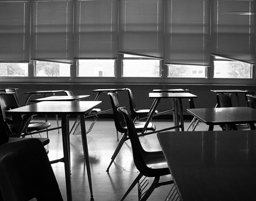
For Chicago public schools, student absenteeism has been a chronic problem.
Last Thursday, the Union League Club of Chicago in the downtown loops released new statistics on the truancy rates in Chicago during the policy meeting, “Hope & Opportunity: Creating Future for Out-of-School Youth.” Lawmakers and CPS officials discussed how the new data affects the city’s strategy in combating truancy.
The statistics reported revealed that drop out rates in Chicago and Illinois declined by nearly half between 2006 and 2012, while truancy and chronic truancy seemingly doubled between 2006 and 2009 , then declining slightly and increasingly almost threefold in 2012.
“The new collection of data reveals that while dropout rates appear to be declining, truancy and chronic truancy in Chicago and Illinois appear to be dramatically escalating,” Executive Director of the Alternative Schools Network Jack Wuest said. “While this data presents a hopeful sign for declining dropouts, the seeming rise in truancy and chronic truancy is troubling and warrants further analysis.”
Compiled by the Illinois State Board of Education (ISBE), the divergent truancy and dropout rates contained in the report revealed wide variations in trends between 2006 and 2012 and can be attributed to how CPS an ISBE classifies truancy and defines “dropout” status.
The ISBE changed truancy classification from nine unexcused absences to 18 unexcused absences.
The ISBE also changed the definition of dropout status to include those students who dropped out between ninth and 12th grade, not kindergarten through twelfth grade.
Representatives from the education sector discussed the implications of this new data at the policy forum, including Chicago Board of Education member Jesse Ruiz, President and CEO of the Chicago Urban League Andrea Zopp, Office of Education Options executive director Jennifer Vidis, Youth Connection Charter School executive director Dr. Sheila Vension along with board members Alejandro Molina and Linda Hannah.
State officials shared perspectives on how the finance budget will factor into expanding programs to re-enroll students who’ve dropped out. These panelists include Illinois State Senator Kimberly Lightford, Illinois State Senator and Chair of the Appropriations II Committee Dan Kotowski, Chair of Elementary and Secondary Education Committee William Davis and Illinois State Representative Camille Lilly.
Despite the spike in absenteeism trends, the Illinois House Joint Resolution (HJR1) established the Truancy in Chicago Public Schools Task Force in 2013. The Task Force is charged with developing strategies to help educators in CPS schools address the truancy problem, promote professional training for school personnel to help reduce contributing factors to truancy and support community-based organizations and parents in encouraging youth to practice positive social behaviors.
“It is our hope that this comparative data on truancy, chronic truancy and dropouts and our discussions at this policy briefing today will support and inform the work of the Truancy in the Chicago Public Schools Task Force as they convene this week,” Wuest said.










